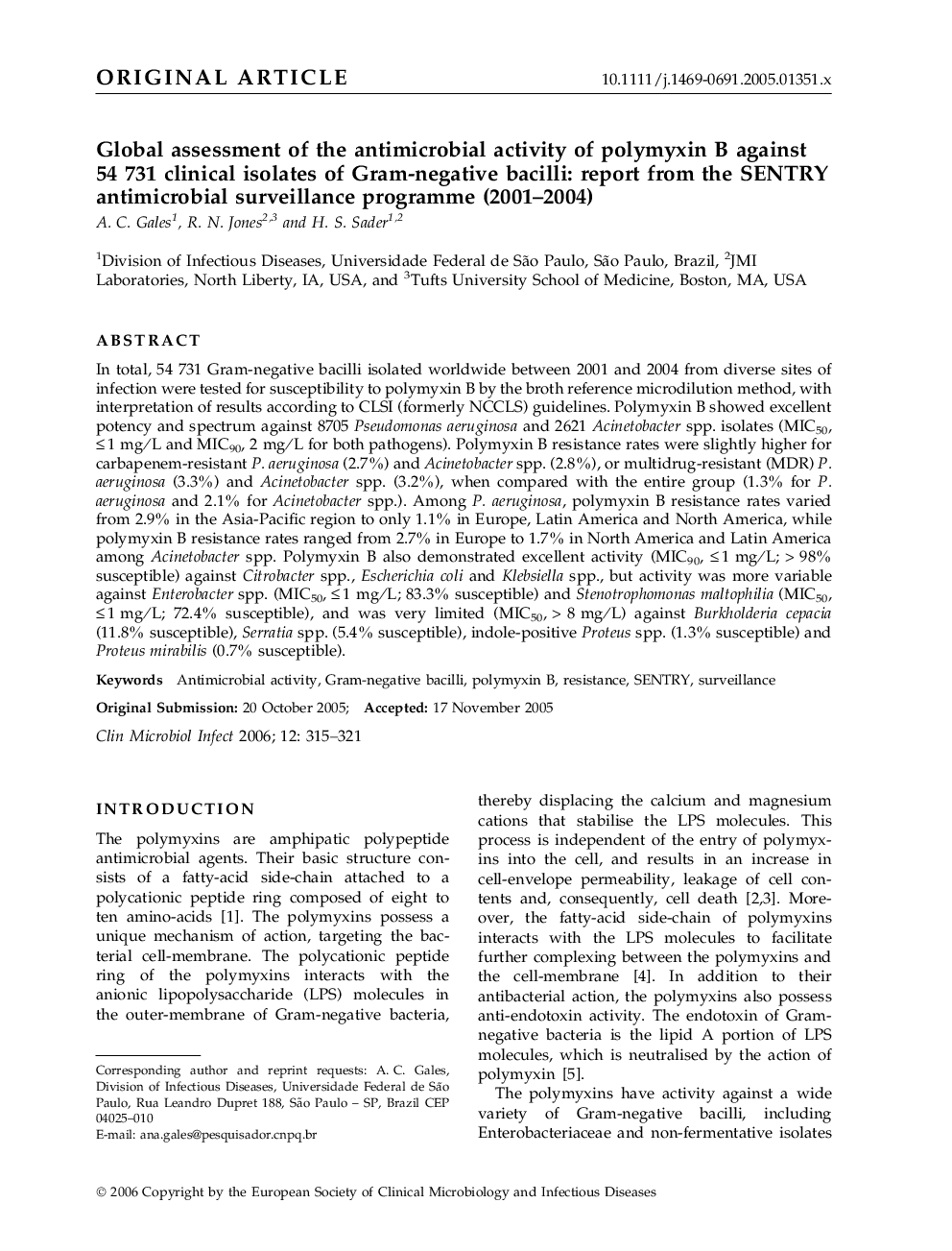| Article ID | Journal | Published Year | Pages | File Type |
|---|---|---|---|---|
| 3398951 | Clinical Microbiology and Infection | 2006 | 7 Pages |
ABSTRACTIn total, 54 731 Gram-negative bacilli isolated worldwide between 2001 and 2004 from diverse sites of infection were tested for susceptibility to polymyxin B by the broth reference microdilution method, with interpretation of results according to CLSI (formerly NCCLS) guidelines. Polymyxin B showed excellent potency and spectrum against 8705 Pseudomonas aeruginosa and 2621 Acinetobacter spp. isolates (MIC50, ≤1 mg/L and MIC90, 2 mg/L for both pathogens). Polymyxin B resistance rates were slightly higher for carbapenem-resistant P. aeruginosa (2.7%) and Acinetobacter spp. (2.8%), or multidrug-resistant (MDR) P. aeruginosa (3.3%) and Acinetobacter spp. (3.2%), when compared with the entire group (1.3% for P. aeruginosa and 2.1% for Acinetobacter spp.). Among P. aeruginosa, polymyxin B resistance rates varied from 2.9% in the Asia-Pacific region to only 1.1% in Europe, Latin America and North America, while polymyxin B resistance rates ranged from 2.7% in Europe to 1.7% in North America and Latin America among Acinetobacter spp. Polymyxin B also demonstrated excellent activity (MIC90, ≤1 mg/L; > 98% susceptible) against Citrobacter spp., Escherichia coli and Klebsiella spp., but activity was more variable against Enterobacter spp. (MIC50, ≤1 mg/L; 83.3% susceptible) and Stenotrophomonas maltophilia (MIC50, ≤1 mg/L; 72.4% susceptible), and was very limited (MIC50, > 8 mg/L) against Burkholderia cepacia (11.8% susceptible), Serratia spp. (5.4% susceptible), indole-positive Proteus spp. (1.3% susceptible) and Proteus mirabilis (0.7% susceptible).
